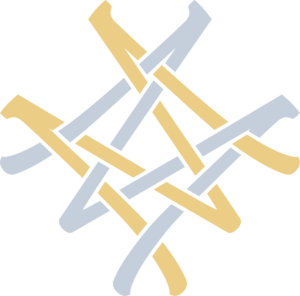Russian names for geographical objects discovered by outstanding Russian navigators are found in every corner of our planet, including New Guinea, with which Russia has had strong historical and scientific ties for 150 years.
Thanks to the Russian scientist and humanist N.N. Miklukho-Maklay’s expeditions in the last third of the XIX century more than 50 geographical objects in New Guinea got Russian names. In addition, Nikolay Nikolaevich became the first European to set foot on the northeastern coast of the island of New Guinea and spent a total of about 2,5 years among the indigenous people.
In 1871, N.N. Miklouho-Maclay arrived in the coast of the northeastern part of New Guinea on the corvette “Vityaz”, where the officers of the Russian ship discovered and mapped Port Constantine (modern Melanua, 5°29′ S 145°51′ E), named after the President of the Imperial Russian Geographical Society, Grand Duke Konstantin Nikolayevich of Russia, Vityaz Island (modern Bil-Bil, 5°29′ S 145°78′ E), as well as the same name Vityaz Strait between Long Island and New Guinea (5°35’ S 147°0’ E). A map with these geographical names was published in 1885 by the Russian Hydrographic Department. Miklouho-Maclay wrote in his diary: “All the headlands were named after the officers making the survey, and the island which could be seen at Cape Duperrey was named Vityaz Island (afterwards I learnt that the native name was Bili Bili)”.
Other Russian names on the shores of Astrolabe Bay directly relate to Miklouho-Maclay. First of all, there was Cape Solitude, where the hut of the Russian scientist was located. The Papuans call this cape “Garagassi Point” (5°28′ S 145°51′ E). In the process of studying the area, the mountains were named after the following people: A.M. Gorchakov (5°36′ S 145°56′ E), Minister of Foreign Affairs of that time; Karl Ernst von Baer (5°36′ S 145°43′ E), a member of the Russian Academy of Sciences, “the dearest friend” of N.N. Miklouho-Maclay; A.A. Meshchersky (5°36′ S 145°43′ E); Peter the Great (5°47′ S 146°00′ E and 5°48′ S 146°03′ E). The Russian traveler was particularly attracted by a peak of the Tayo Range, he called Mt. Grand Duke Konstantin (5°28′ S 145°38′ E)… as well as another mountain he called Mt. Grand Duchess Elena (5°34′ S 145°51 E).
In August 1872, N.N. Miklouho-Maclay discovered a vast archipelago of coastal islands to the North of Astrolabe Bay. The inhabitants of this archipelago met Miklouho-Maclay very amicably and impressed him much as contented people who led a happy life. Therefore, the Archipelago of Contented Peoples appeared on the map (5°12′ S 145°50′ E). The name of the Maclay Coast (modern Rai Coast, 4°50′-5°55′ S 145°50′-147°20′ E) was also given by Nikolay Nikolaevich: “The Maclay Coast I call a part of the northeastern coast of New Guinea approximately from Cape Croiselles to Cape Telyata (more than 300 km) < … > Thus, I call the coast of New Guinea by the right of the first European who settled there, explored the coast and got scientific results”.
When the first N. N. Miklouho-Maclay’s expedition to New Guinea was coming to an end, the clipper “Izumrud” (after which Nikolay Nikolaevich named the strait (4°45′ S, 145°50′ E) between the Karkar Islands and New Guinea) came for the Russian scientist.
In 1874, During his next voyage, this time to the western part of the largest island in Oceania, N.N. Miklouho-Maclay discovered the strait between New Guinea and the Archipelago of Mawara and named it the Grand Duchess Elena Strait (3°48′ S, 134°00′ E).
During the second expedition to the Maclay Coast in 1876-1877, N.N. Miklouho-Maclay planted coconut palms on a small island that had no permanent population and told Kain, the Chief of the village of Bili Bili, that he would reside there the next time. Later, the inhabitants of the northeastern coast of New Guinea named the island after N.N. Miklouho-Maclay (modern Urembo, 5°15′ S 145°47′ E).
5 years later, in 1882, the corvette “Vityaz” was renamed after the Russian General M.D. Skobelev, a participant of the Russo-Turkish war of 1877-1878, and made a circumnavigation under the command of captain V.V. Blagodarev in 1883-1885. While in Batavia (now Jakarta, Indonesia), the crew of “Skobelev” met N.N. Miklouho-Maclay. V.V. Blagodarev helped the scientist to get to the Maclay Coast, where Nikolay Nikolaevich continued his research, and the officers of “Skobelev” began studying the waters of Astrolabe Bay. Off the North-East of New Guinea, the crew of V.V. Blagodarev discovered and mapped Port Alexei (modern Sek Harbour 5°04′ S 145°48′ E), Cape Bialokoz (5°05′ S 145°49′ E) and a number of islands in the Bismarck Sea: Kraft Island (modern Tausch Island, 5°07′ S 145°50′ E), Lebedev Island (modern Admosin Island, 5°04′ S 145°47′ E), Azbelev Island (5°06′ S 145°49′ E), Planson Island (modern Ulimal Island, 5°06′ S 145°50′ E) and Smirnov Island (modern Megas Island, 5°05′ S 145°50′ E). The largest of the discovered islands was named after the outstanding Russian General M.D. Skobelev and the expedition ship of the same name (modern Sek Island, 5°05′ S 145°50′ E).
After the German colonization of this part of New Guinea, a significant number of Russian toponyms were renamed. During the time of Australian power, some toponyms also were changed. For example, the Maclay Coast now is called Rai Coast, possibly after the name of one of the villages on the coast, but there is still no single explanation of the origin of this toponym. An outstanding Soviet and Russian ethnographer D.D. Tumarkin (1928-2019) wrote about it in 1984 in his article “K istorii toponima Berega Maklaya” [On the history of the toponym of the Maklay Coast].
The continuity of the studies in Oceania was successfully restored in the XXI century, as the first expedition to Papua New Guinea in the modern history of Russia “Miklouho-Maclay XXI century. The Maclay Coast” was organized in 2017. N.N. Miklouho-Maclay Jr., the Director and founder of the Miklouho-Maclay Foundation, the great-grandnephew and full namesake of the Russian scientist led the expedition. At the same time, part of the village of Gorendu on the Maclay Coast (the North-East of New Guinea) was named “Maclay village” (5°28′ S 145°50′ E) on the occasion of the arrival of Russian researchers in Papua New Guinea. The initiative to rename the village was put forward by Asel Tui, a descendant of Tui, who in 1871 was the first to meet the Russian humanist scientist and traveler Miklouho-Maclay Sr.
Modern expeditions have confirmed the fact of renaming toponyms on the Maclay Coast. Neither the local residents, nor the Madang City Administration could give an answer about the origin of the name “Rai”. When the locals learned that “Rai” in Russian means “Paradise”, i.e. “Paradise Coast”, they became very happy with this meaning in the language of Maclay, but they were not against renaming it as the Maclay Coast, the historically correct name, because this was a part of the history of the island, a part of the history of the Papuans (indigenous people).
The history of exploration of New Guinea by N.N. Miklouho-Maclay and Russian navigators is striking in its grandeur and scale. Throughout the entire region of the South Seas, we can find Russian names for geographical objects discovered and mapped by scientists and navigators. Immortalized in their works and on geographical maps of New Guinea and Oceania, they have become a source of knowledge and pride for many Russians who grew up on the stories about the adventures of N.N. Miklouho-Maclay, as well as the younger generation, who are just getting acquainted with the heritage of the world-famous scientist and traveler.



